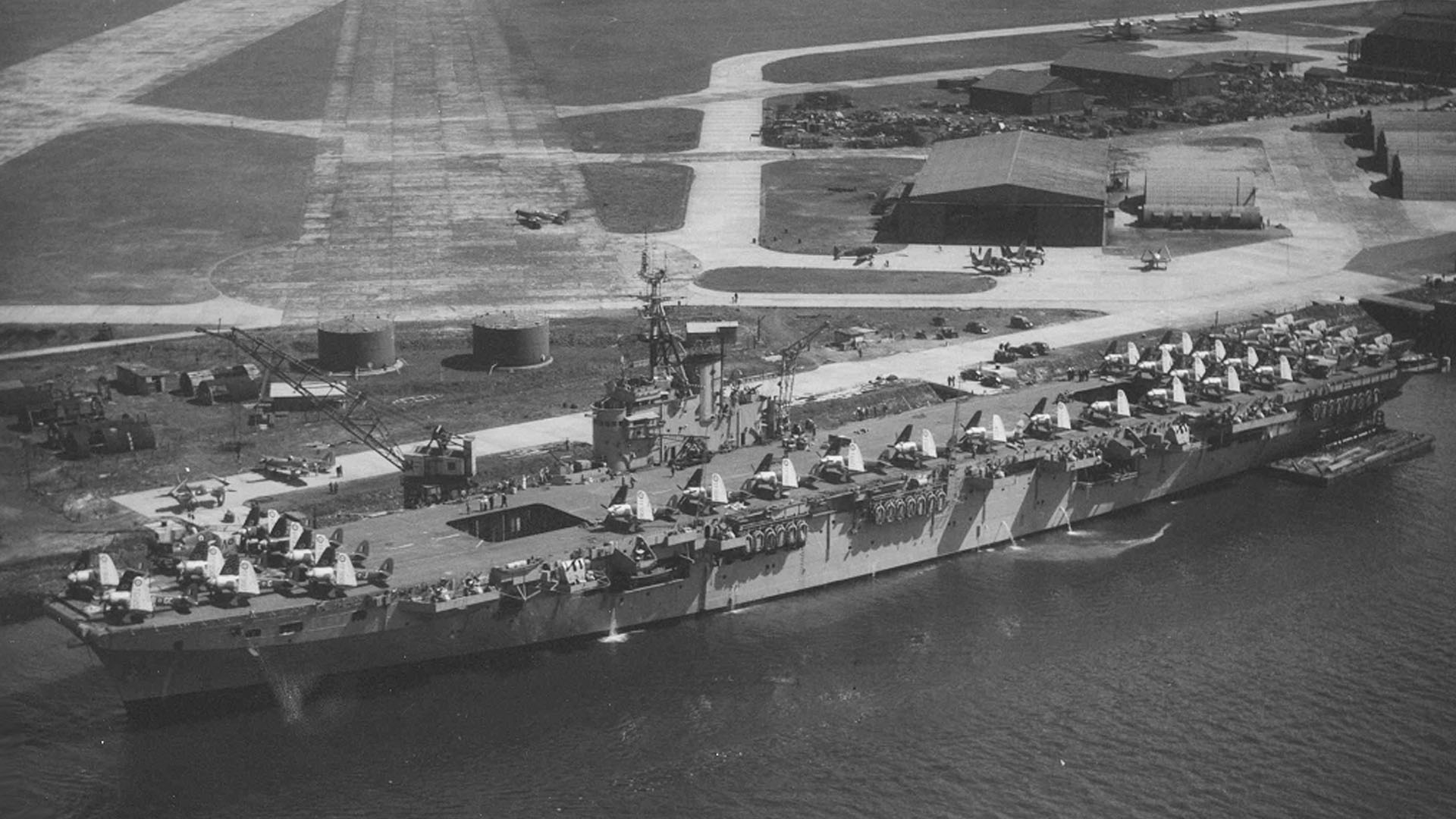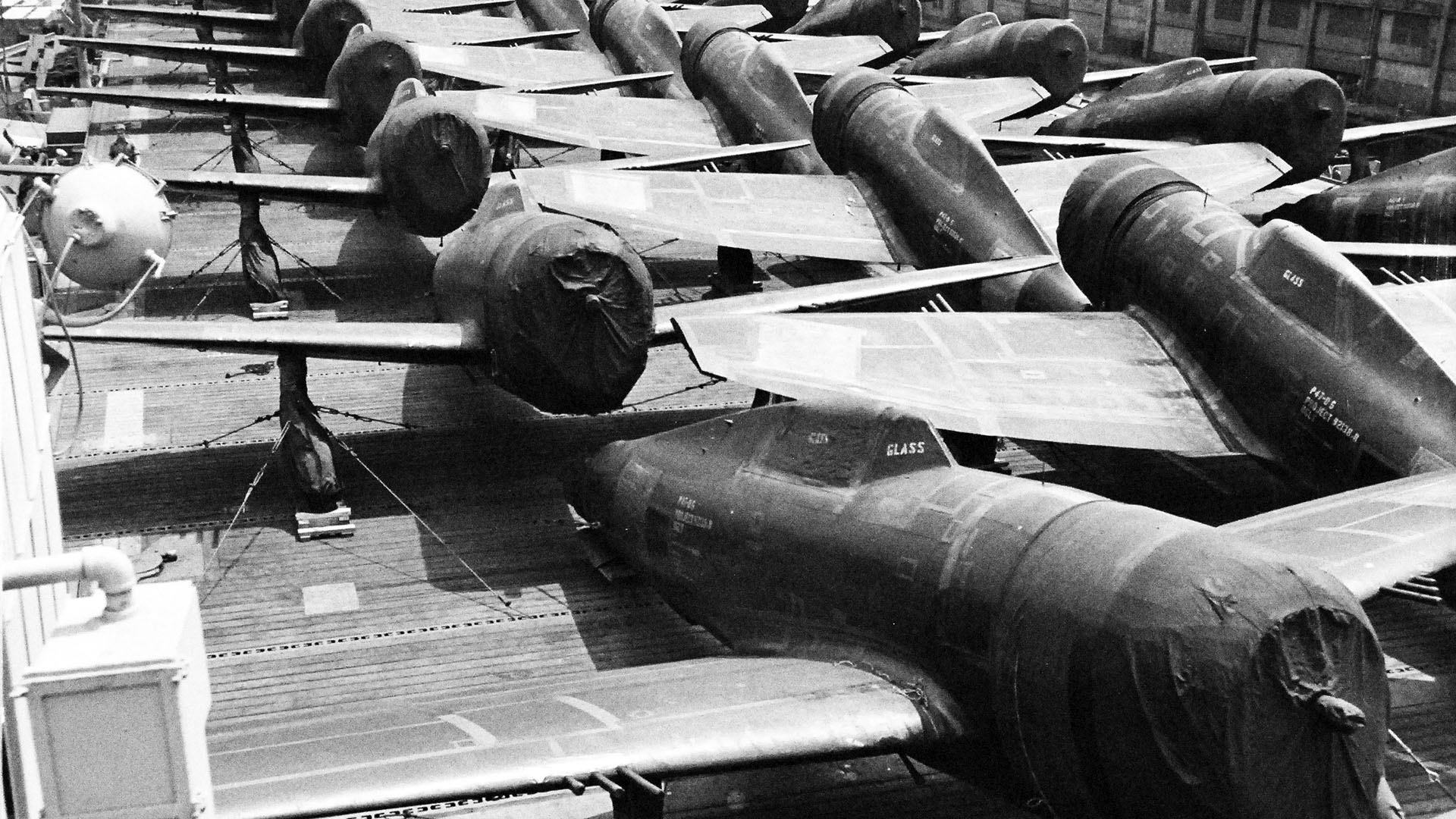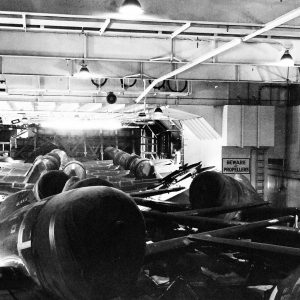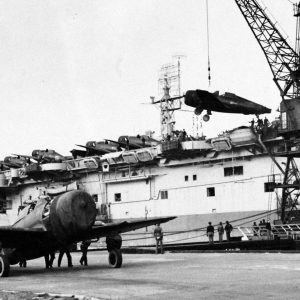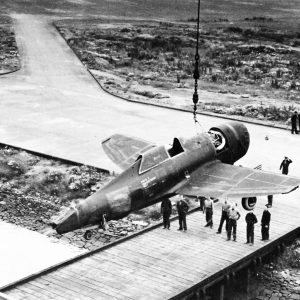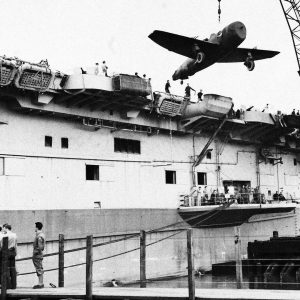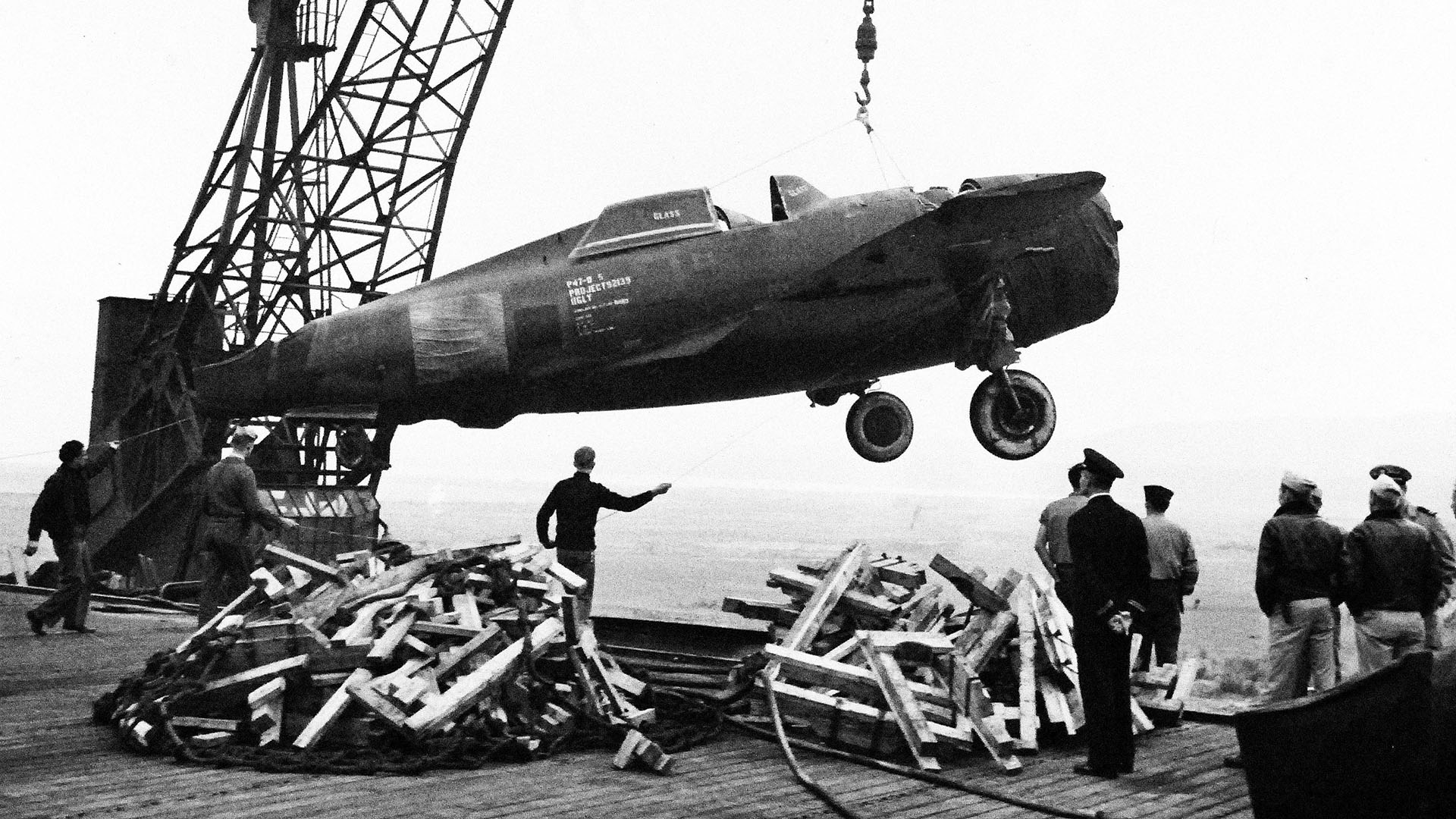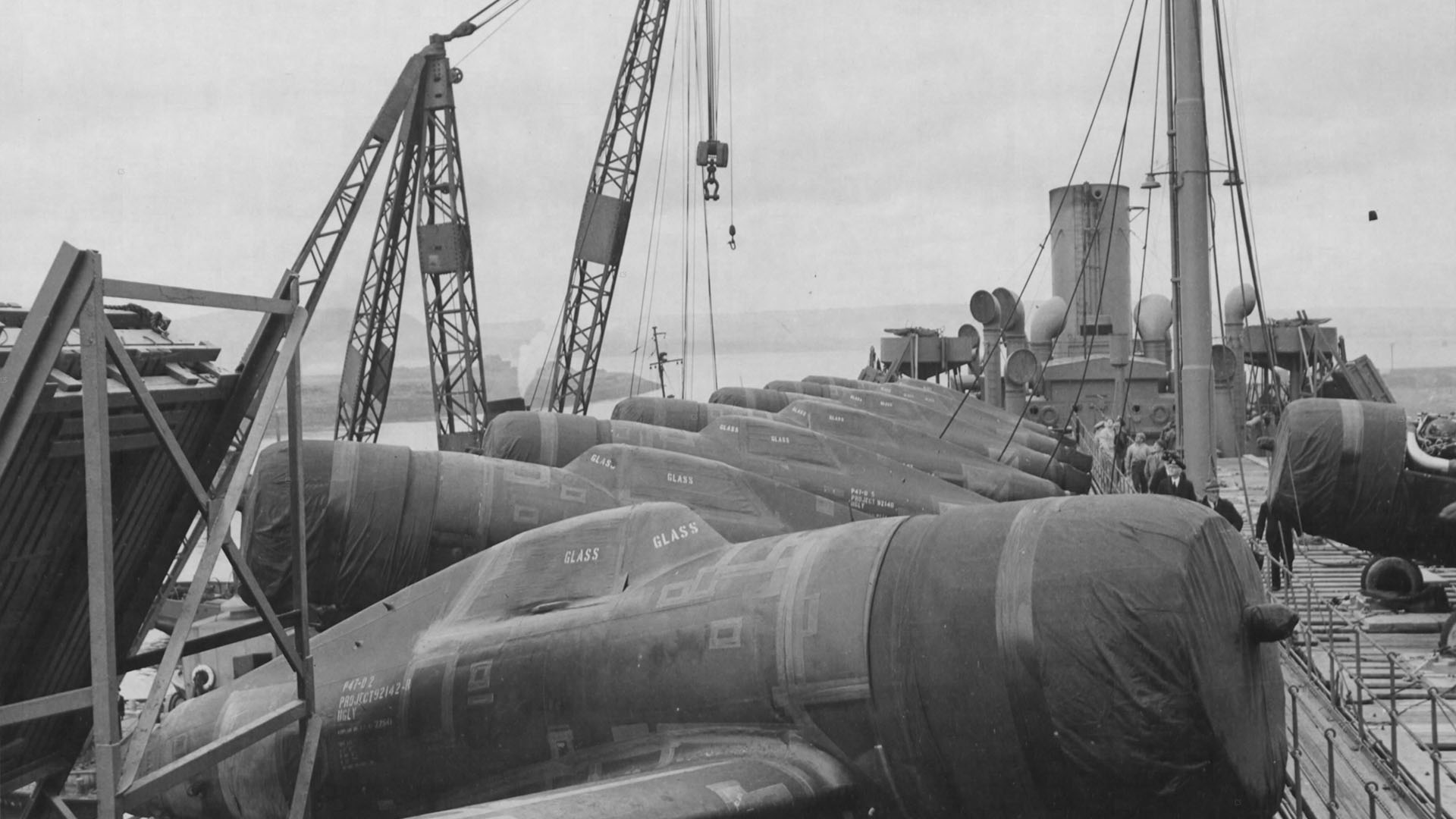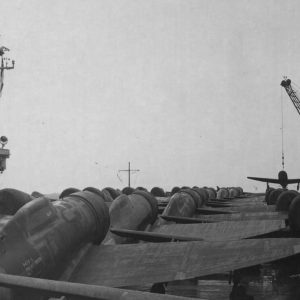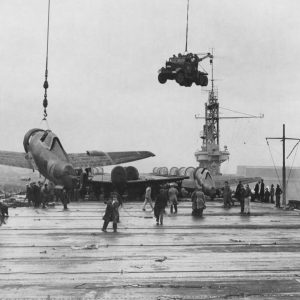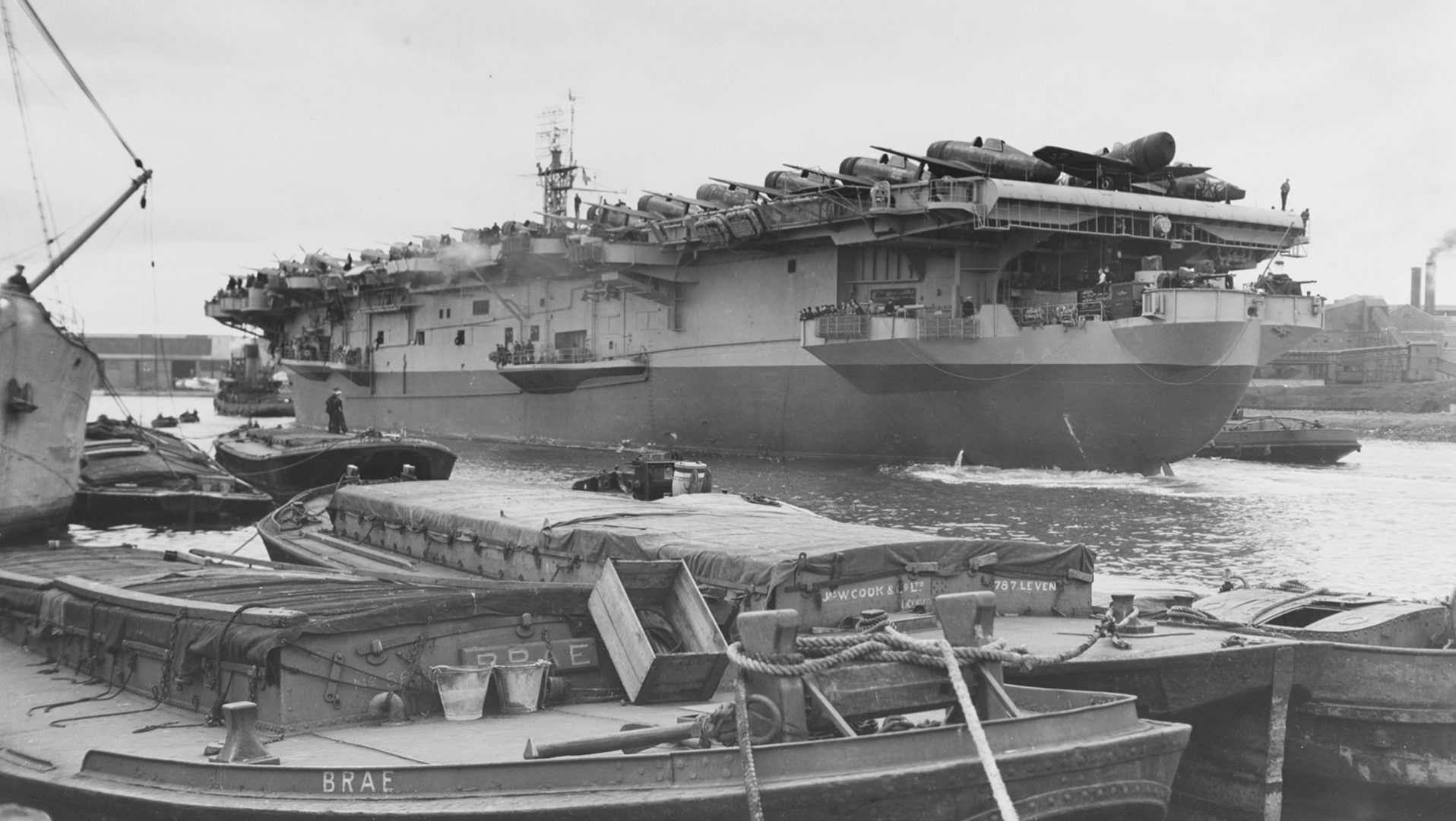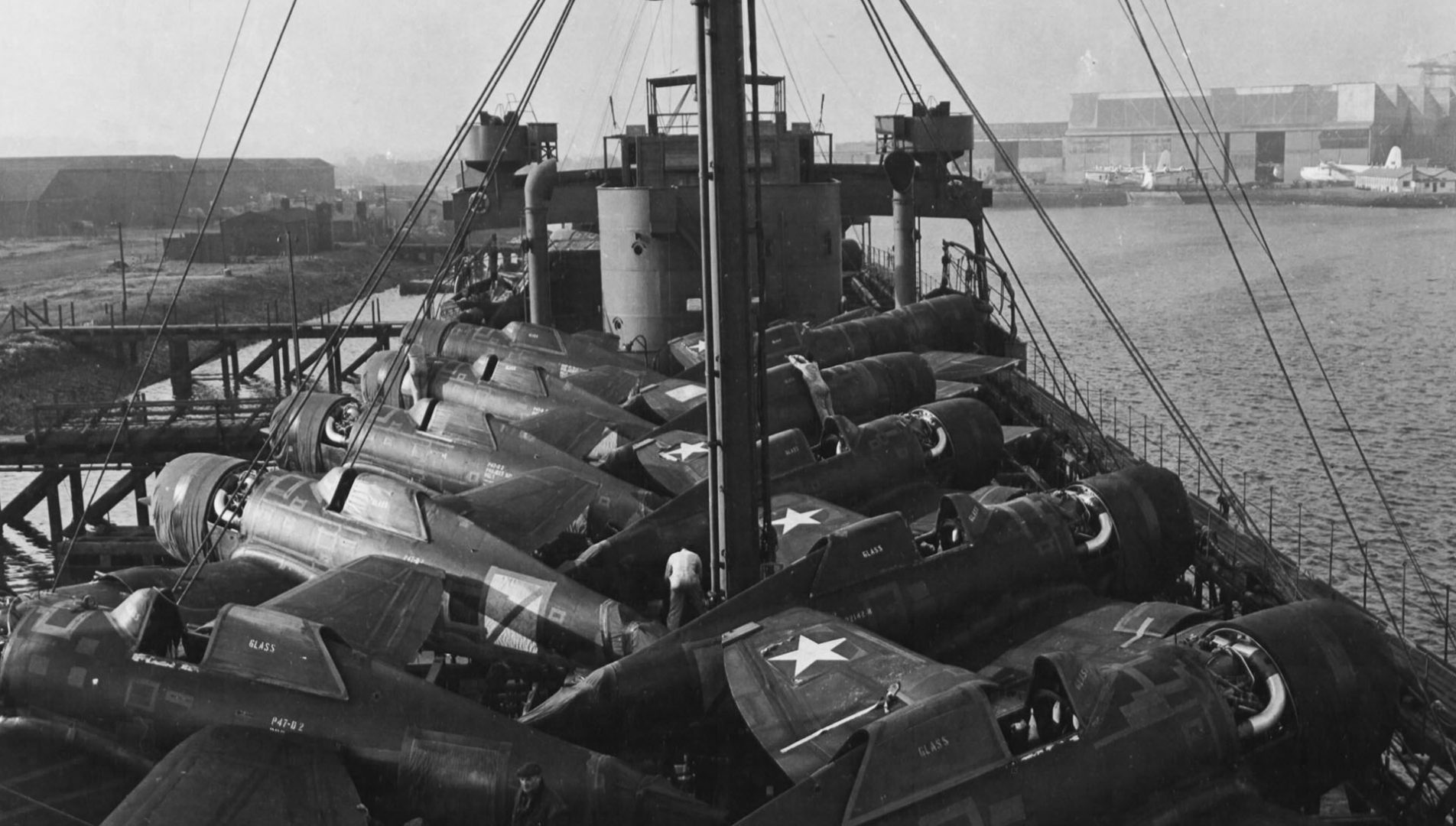During the Second World War, Airport Wharf serviced the Sydenham Airfield, Belfast. The airfield operated as both R.A.F. Sydenham and R.N.A.S. Belfast throughout wartime. The specially constructed wharf off Airport Road West allowed access from the Musgrave Channel.
Work on the Ammunition Jetty took place after 1941 after the Belfast Harbour Commissioners called in the firm of Charles Brand and Sons Ltd. The firm completed many major projects in the area over a 5 year period until just after the Second World War. These included extended the Pollock Dock, construction of the Herdman Wharf, an Aircraft Carrier Jetty, and the Ammunition Jetty.
U.S.S. Block Island in Belfast
On 27th July 1943, U.S.S. Block Island arrived in Belfast and unloaded a cargo of Republic P-47 Thunderbolts at Airport Wharf. The American Escort Carrier would make 2 Atlantic crossings bringing military planes from the United States of America to Northern Ireland.
G. Harrison Smith in Belfast
On 8th August 1943, oil tanker G. Harrison Smith unloaded a cargo of 21 Republic P-47 Thunderbolts at Airport Wharf. The tanker used a specially constructed wooden deck to aid the transport of the American planes. Unloading of the cargo took 3 hours 49 minutes.
H.M.S. Pursuer in Belfast
On 11th August 1943, H.M.S Pursuer unloaded a cargo of 62 Republic P-47 Thunderbolts at Airport Wharf. The planes made the journey on board as part of Convoy HX 250. Wingtips, tail assemblies, and propellers occupied cases of parts on the hangar deck. Unloading of the cargo took a total of 12 hours 10 minutes between 0800hrs on 11th August 1943 and 1145hrs on 12th August 1943.
U.S.S. Block Island Returns
On 7th September 1943, U.S.S. Block Island made a second stop at Airport Wharf, Belfast. There, local stevedores and Lockheed Overseas Corporation employees unloaded another cargo of Republic P-47 Thunderbolts. Tug Empire Meadow guided the American vessel through Musgrave Channel before the cargo was unloaded in 14 hours.
Naval Photographic Center Film #1202. National Archives Identifier: 75884. [No Sound]
Explosions on Ammunition Jetty
On 5th August 1948, the British Army carried out controlled explosions on 5 aerial mines and an anti-aircraft shell next to the jetty. Dredging operations in Belfast Lough had discovered the ordnance and the explosives came ashore by use of a suction pipe.
Reporters crouched behind a bank as Captain L. Ellis, Inspecting Ordnance Officer, H.Q., N.I.D., pressed a detonator and within a few seconds a terrific bang rent the air, followed by a cloud of smoke and dust.
Belfast Telegraph – Thursday 5th August 1948.
The explosives were British and American in origin, though to be the type used in anti-submarine warfare. The thought at the time was that they had fallen overboard during unloading from a vessel in wartime.
